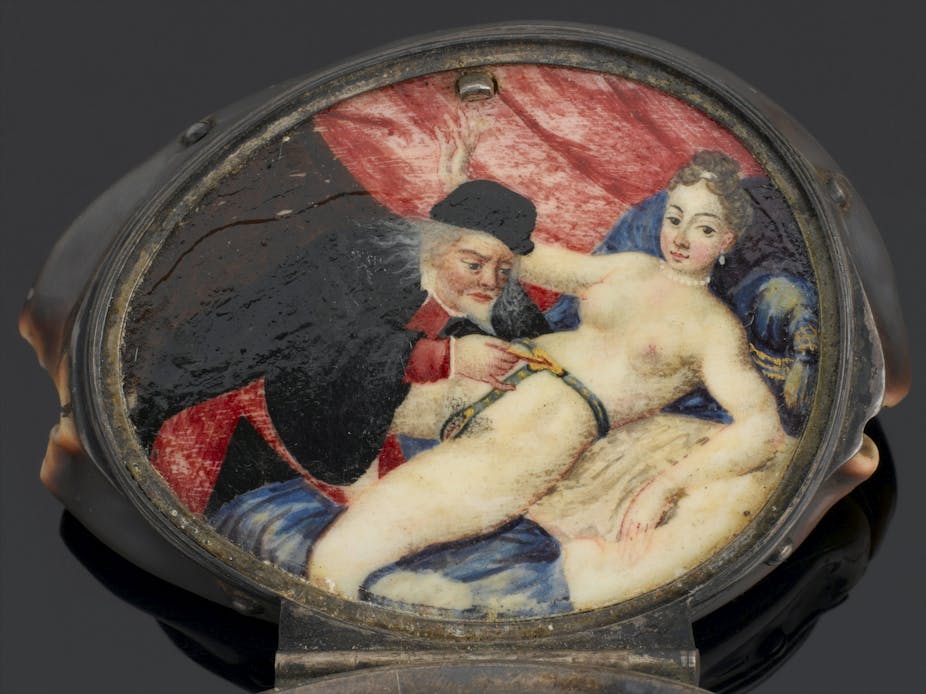“Undress your mind” shouts the promotional material for the Wellcome Trust’s latest exhibition, The Institute of Sexology. It’s an apt tagline, encapsulating how sexology – or the science of sex – has attempted to analyse this most physical and private of acts.

Unsurprisingly, this hasn’t been easy. Over the discipline’s history, there have been many obstacles. Few sciences have a similarly stuttered development as sexology. Thought by some to be purely scientific, others as prurient verging on the putrid, still others as key to the renewal of the nation and the people, sexology has had as varied a history and reception as the activities it has analysed and recorded.
The exhibition traces the development of this science, revealing how, as curator Kate Forde says: “each generation likes to think that it invented sex” – or, at least, how sex ought to be.
Everyone has an opinion on what French philosopher Michel Foucault described as the “secret” of sexuality. The 19th-century Argentinean politician, Juan Bautista Alberdi argued that “to govern was to populate”. British campaigner Marie Stopes believed that making contraceptives available, especially to the poor, would enable the “race” to improve. The Austrian psychoanalyst, Wilhelm Reich, explained sexual repression as a consequence of an authoritarian character, providing one of the earliest explanations of the rise of Nazism as a result of damming up the “orgasmic convulsion”. The list goes on.

Sexual artefact

But what counts as evidence when it comes to such a personal science? The exhibition goes a long way to documenting diversity, displaying artefacts, photographs, graphs, testimonies, archival material and treatises on sexuality. Visitors can see sketches recording sexual positions, photographs of same-sex couples, the container for an “anti-baby condom” and artworks commissioned especially for the exhibition. But it also looks to the future, in that materials will be added over its 11 months of existence – and individuals are asked to record their own sexual experiences in a “living archive” for future researchers.
The fact that this large public exhibition about sexuality has attracted so much attention (and no doubt a corresponding amount of visitors) shows how much we still need to demystify sex. Apparently it still needs to be rescued from what many still think as the closeted world of the Victorians and displayed in all its contours.

All of the exhibitions different rooms depict the cross-over between sexuality and a particular space or form of knowledge: from the library, to the consulting room, to the anthropological tent and the bedroom. In doing so, sexuality is revealed to be a set of relationships that are moulded by culture, religion, science and – inevitably – the ways in which its diversity has been studied and recorded by specialists.
Sculpting sex today
Eventually, it is sexologists who have curated our attitudes to sex today, although it may not seem it when considering some of the earliest research in the field. Early 20th-century anthropologists such as Bronisław Malinowski believed that they had found an uncontaminated form of “primitive” sexuality in the “natives” of non-western societies. This was a lesson taken on board by many, from psychoanalysts to revolutionaries. They sought to harness the power of sexuality, consign capitalism to history and usher in a liberated world, free of disease and sexual neuroses.

Reich built fascinating devices that he called orgone accumulators. These were boxes that ostensibly harnessed the bio-energetic function of the orgasm. To him, this was a crucial part of the struggle against the “emotional plague”. Reich linked sexual repression with authoritarian, misogynistic, genital-focused, violent and reactionary individuals – as well as with the National Socialists in Germany. This struck a chord with many and rode on a wave of progressive thinking in the 1930s that spanned from central Europe to the shores of the Mediterranean.

The Spanish anarchist sexologist Dr Félix Martí Ibáñez argued that the “supreme liberation of collective sexuality” was the task of a “phalanx of tenacious fighters”. By means of the word and example, they would blow new life into the “clay of future generations” liberated from the yoke of Church and sexual repression.
So are we those future generations? The search for the deep-rooted cultural and personal trauma as pioneered by psychoanalysis has been displaced, the landscape that surrounds us has changed. In the West, the association between sexuality and liberation, so characteristic of the 1930s and the 1960s, encapsulating feminism through to gay pride, has been somewhat eclipsed. Now, hormonal and genetic explanations of the “truth” of sexuality rule. This “truth” is located in parts of our brains and is ever more individualised.
But we need to remember that this is only part of the story, part of the “Institute of Sex” and its approach and, most crucially of all, it is an unfinished “truth”. So if you visit the exhibition, write down your experiences – and leave them for those future generations.
The Institute of Sexology is at The Wellcome Trust from November 20 2014 until September 20 2015.

